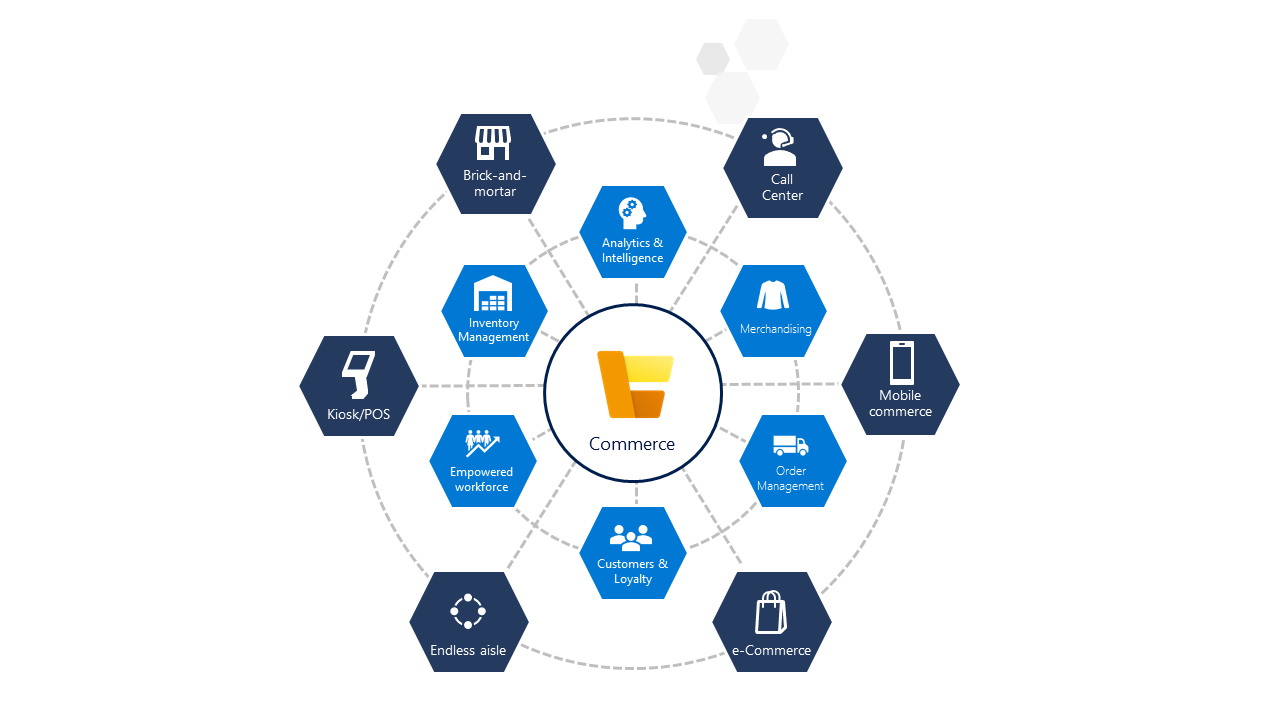Introduction
The modern retail customer is well informed and demands a great shopping experience. They want to feel in control of their experience, from researching product price and quality, to purchasing from the brand that offers the most personalized, convenient service, to maximizing the value of every dollar spent. Their shopping journey can start in one channel, progress in another, and then end in a third channel of the customer’s choice.
To meet the customer’s demands, you need a solution that can:
- Attract customers with personalized experiences and streamlined store operations.
- Compete better by helping your customers be proficient and helping you build lasting relationships with them.
- Create rich customer-first experiences at all touchpoints that are tied with back-end operations.
- Improve merchandising efficiencies with intelligent insights.
- Unify data and take advantage of a data-driven approach.
- Give your employees the tools and information they need for ultra-responsive customer service.
To meet these requirements, you need a modern, flexible cloud commerce solution like Microsoft Dynamics 365 Commerce. Commerce is a complete retail solution that gives you a unified experience across all channels. It includes sales, mobility, intelligence, and productivity to help you achieve more in a cloud-first, mobile-first way.
Because Commerce is a complete retail solution, the ability to interact with other Dynamics 365 apps is important. Commerce pulls item data from the Inventory management module, and customer data from the Accounts receivable module in Dynamics 365 Supply Chain Management , into a channel database”. This allows the Store Commerce registers and websites to interact with synchronized, real-time data.
For example, when a sales order is created online or in store, the new data will sync back to the database and process the sales order to invoice and update financial and inventory counts.
There are more capabilities that can be combined with Commerce to continuously exceed customer expectations. For example, using built in AI to predict customer needs to boost seller productivity.
You can read more about other Dynamics 365 apps that work with Commerce in the Related applications section of Commerce Capabilities
The following graphic shows the components of Commerce.
Connected commerce isn't only about delivering great customer experiences. By bringing together historically disconnected channels like physical stores, e-commerce, call centers, and emerging channels, you can break down the data silos of the traditional retail business. Commerce allows you to use modern tools like machine learning and AI to gain better business insights. With these insights, you can drive an intelligent supply chain, support your employees, and deliver experiences that weren't possible a decade ago.
Watch the following video for an in-depth explanation of Commerce and the value that it brings to your business.
In this module, you'll:
- Discover deployment options.
- Learn about point-of-sale systems.
- Explore omnichannel and merchandising.
Note
In this module, all data that is reflected in screenshots is fictitious.
Next, you'll review the challenges that are faced by retail organizations and how Commerce can help address those challenges.
